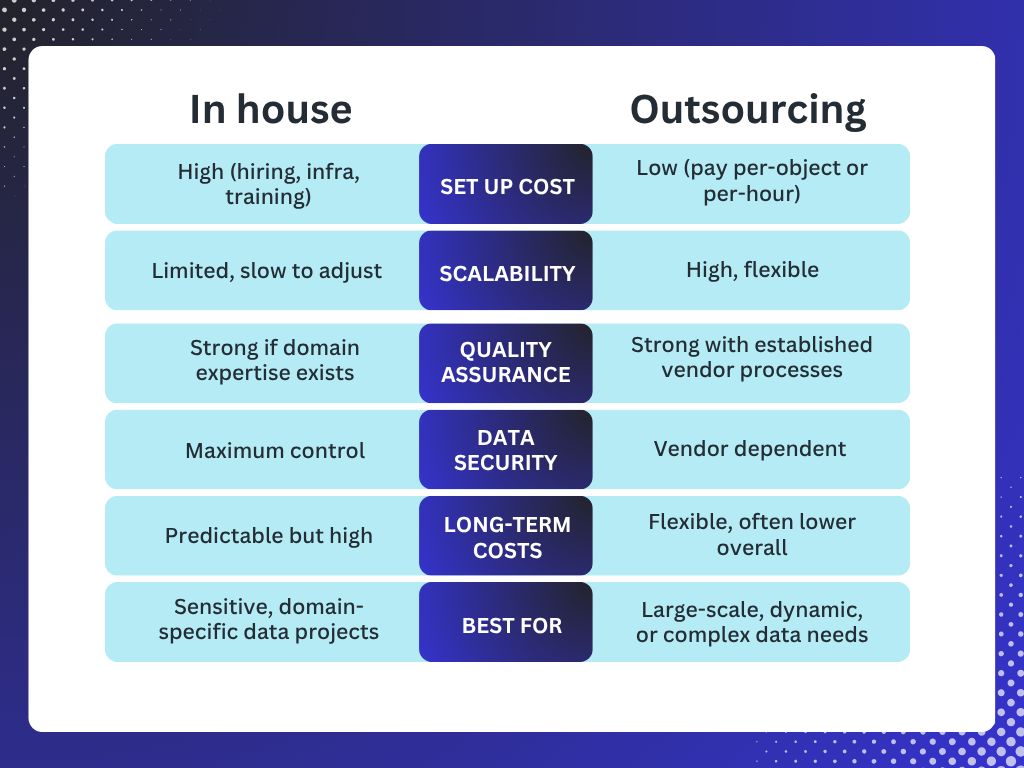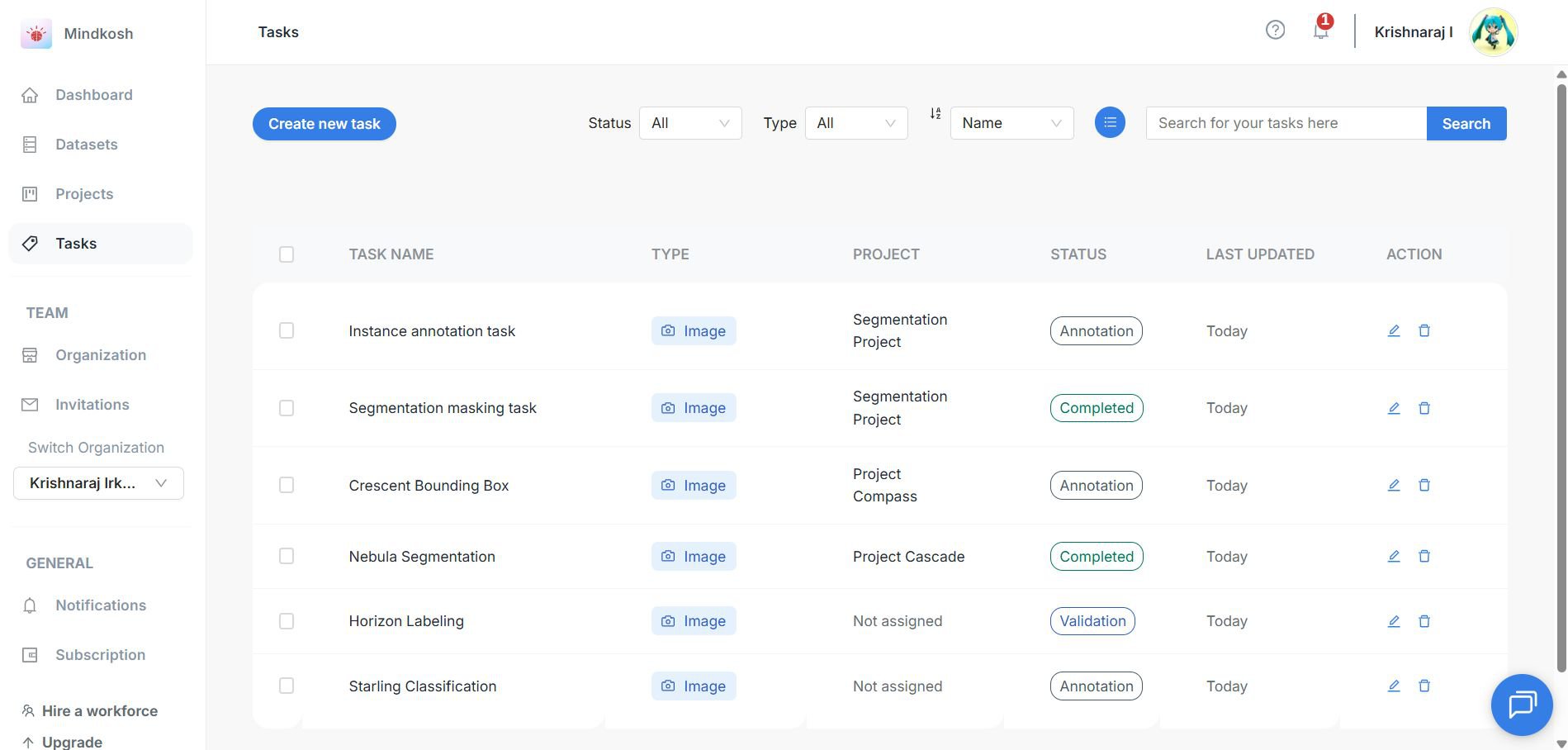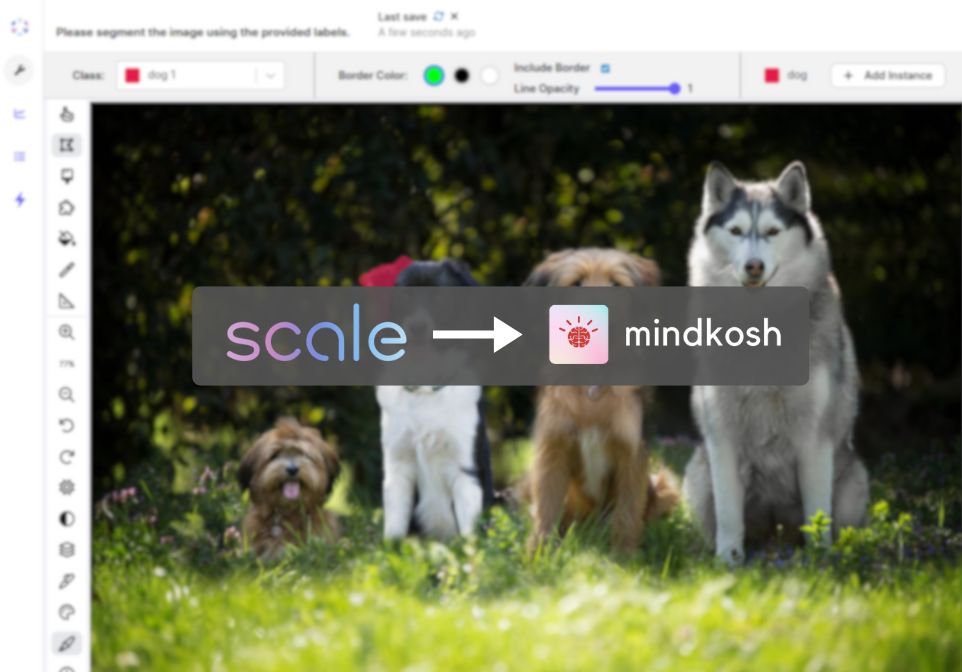Data labeling is the backbone of any AI or machine learning initiative. But when it comes to execution, organizations often face a familiar dilemma: Should we build an in-house annotation team or outsource to a specialized partner?
Both options come with advantages — and costs. The question isn’t just about cutting expenses but about balancing quality, scalability, and ROI. In this blog, we break down the trade-offs and help you decide what truly saves more in the long run.
The cost dilemma
The quality of your labeled data directly affects the performance of your models. Poor labeling = poor AI results. But data labeling can incur significant costs, and every team has a budget - whether its large or more modest. Setting up in-house labeling teams requires salaries, benefits, training, and infrastructure, so there is a significant up-front cost of setting up the operations. On the other hand, while outsourcing requires no upfront costs, large projects can incur a significant cost.
So, which strategy is more cost-effective — and when?

Why the cost question matters?
Pros:
- Full control: Direct oversight of workflows, quality checks, and adjustments.
- Domain knowledge: Internal teams gain deep familiarity with your product and data.
- Data security: Sensitive datasets never leave your ecosystem.
Cons:
- High overhead: Salaries, hiring, retention, and training stack up quickly.
- Limited scalability: Scaling up means lengthy hiring cycles. Scaling down risks idle resources.
- Expertise gap: Training new teams for complex tasks like LiDAR segmentation can take months.
Cost angle: In-house is rarely cheaper in the short term. For ongoing, long-term projects with stable data needs, it may balance out over time — but the upfront investment is steep.
In-house data labeling: Control comes at a price
Pros:
- Cost efficiency: No need to build infrastructure or hire full-time staff.
- Scalability: Easily scale up or down with project demand.
- Access to expertise: Vendors specialize in complex annotation tasks (e.g., sensor fusion, medical data).
- Focus on core work: Your team can concentrate on model development, not label management.
Cons:
- Data security risks: Sharing sensitive datasets requires strong compliance. This can be mitigated if the vendor has a flexible platform to manage the data and setup access control.
- Dependency: Your progress relies on the vendor’s delivery timelines. And while the scalability allows you to increase or decrease the output in theory, you are dependent on the vendor to execute the tasks in a timely manner.
- Communication gaps: Misalignment in labeling instructions can hurt quality if not managed well. Again, this can be mitigated by having a central platform to manage all communications and labeling instructions. If you are still using spreadsheets and word documents for communication, it can be a big bottleneck.
Cost angle: Outsourcing saves significantly on upfront and recurring costs. For most AI teams — especially startups or companies dealing with fluctuating data needs — outsourcing wins on ROI.
We’ve unpacked this further in our blog Data annotation outsourcing – worth the price?
Outsourcing data labeling: Pay for what you need

Mindkosh combines enterprise-grade tooling with a large trained workforce to provide a high quality scalable solution to data annotation requirements.
The Mindkosh annotation platform offers support for multiple sensors like Lidar, Radar, depth, thermal and RGB cameras, adjustable annotation workflows, and built-in QA tools so you can easily perform quality checking right on the platform. As alluded above, some of the concerns usually associated with outsourcing can be mitigated by using the right data platform. With Mindkosh, you can choose to connect your own data storage so your data is never stored on our servers. You can also choose who gets access to the raw as well as annotated data to limit access to only required personnel.
To effectively manage communication, Mindkosh offers a comprehensive issue management system so you can provide the right context to the right people and initiate a conversation to resolve issues.
In addition, we employ automatic annotation tools, which reduce our turnaround times drastically while ensuring the highest quality annotations. You can check out our reference pricing and estimate your project costs here.
Finding the right balance
It’s not always black and white. Many organizations adopt a hybrid approach:
- Keep a small in-house team for sensitive or domain-heavy data.
- Outsource large-scale or repetitive labeling tasks to vendors.
This strategy combines control with cost savings.
Finding the right balance
If your AI project demands speed, scale, and specialized expertise, outsourcing almost always delivers more value at a lower cost. In-house teams only make financial sense if you have stable, ongoing annotation needs and the budget to sustain them.
The key is choosing the right partner. A trusted provider like Mindkosh ensures high-quality annotations, flexible scaling, and strict security compliance — so you save both time and money while building reliable AI models.
Learn how to choose the right vendor in our guide: AI Data annotation outsourcing – choosing the right vendor.




